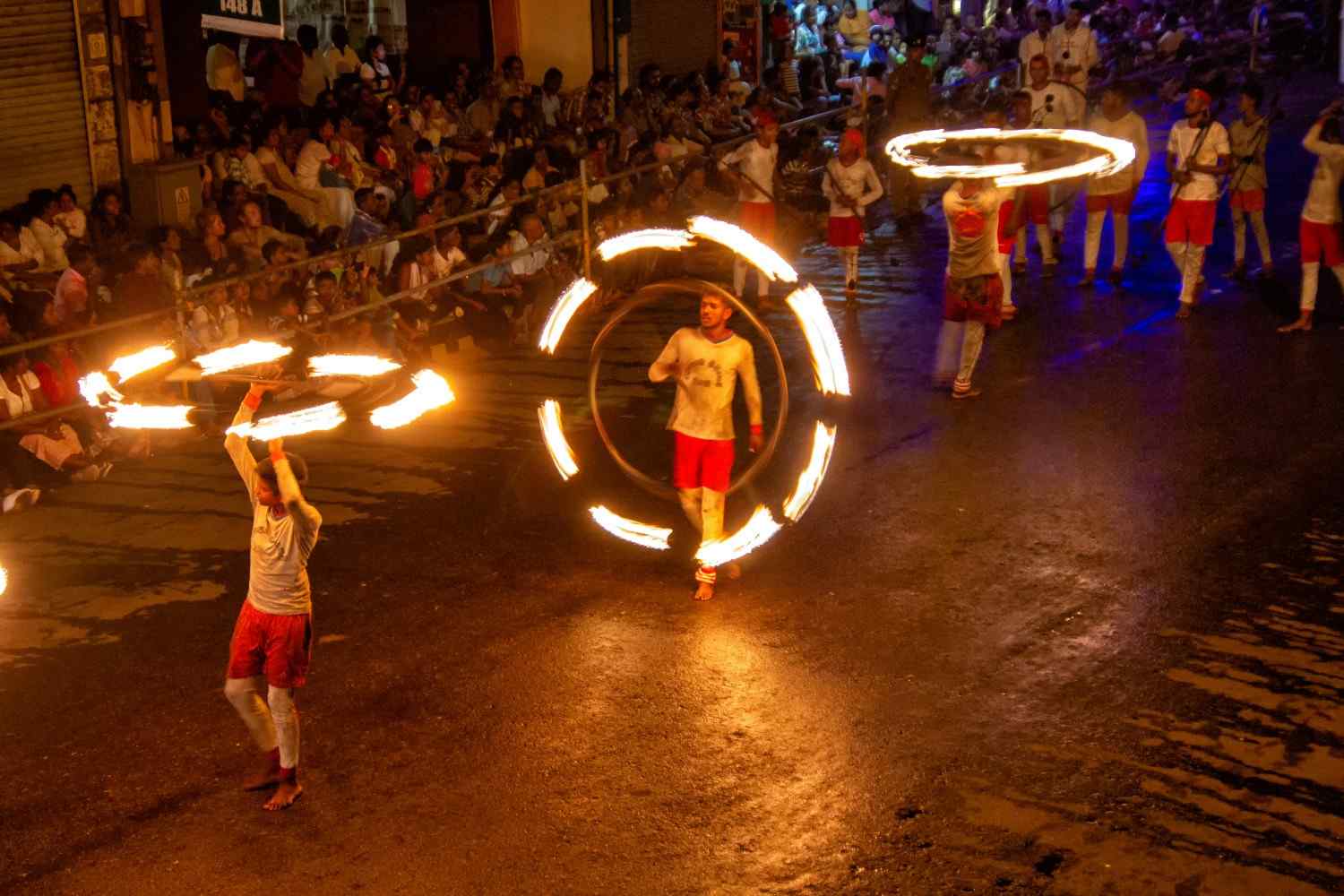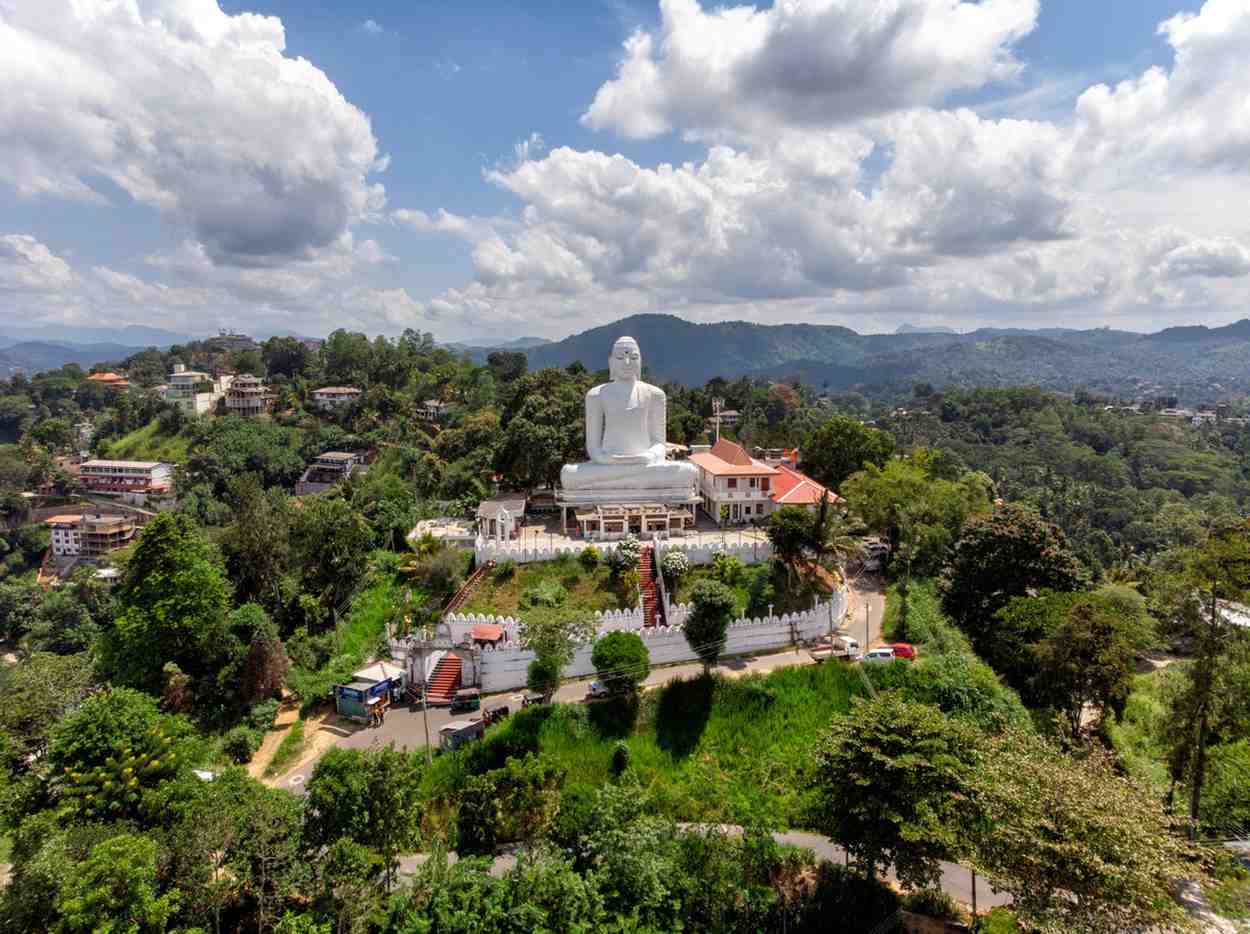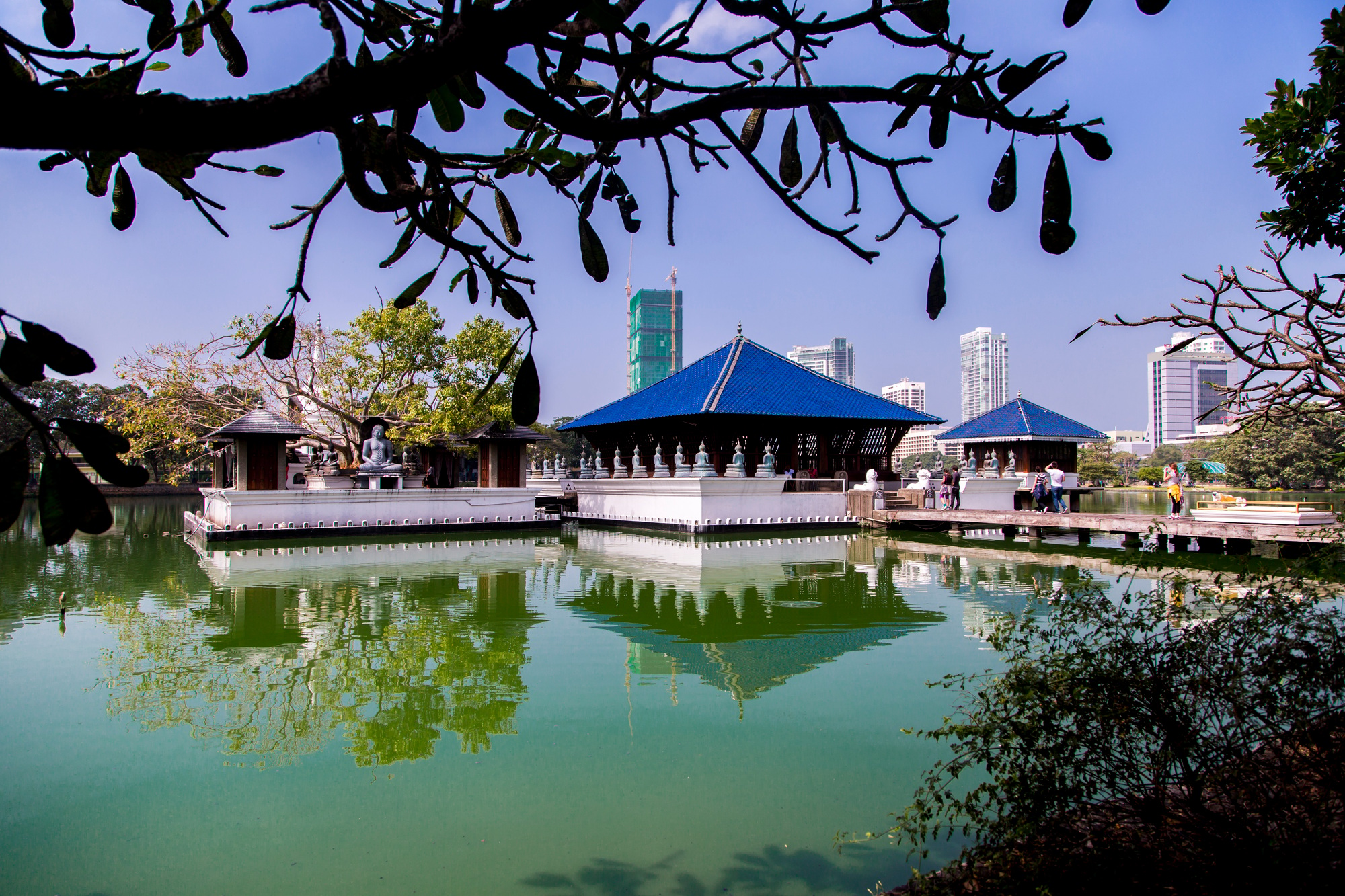Introduction
Kandy, the cultural capital of Sri Lanka, is a city steeped in history and tradition, renowned for its stunning landscapes and vibrant heritage. At the heart of Kandy lies the Temple of the Sacred Tooth Relic, an essential landmark that not only serves as a religious sanctuary but also stands as a national symbol of Sri Lankan identity. The temple is home to one of the most venerated objects in Buddhism—the sacred relic believed to be a tooth of the Buddha himself. This relic is not merely a physical artifact; it embodies the spiritual aspirations of millions of Buddhists around the world.
The significance of the Temple of the Sacred Tooth Relic is further accentuated by its designation as a UNESCO World Heritage site. This recognition is a testament to its cultural and historical value, preserving it as an integral part of Sri Lanka’s legacy. The temple attracts visitors from across the globe, drawing both pilgrims seeking spiritual solace and tourists eager to immerse themselves in the rich cultural tapestry of the region. Within its walls, the temple complex showcases exquisite Kandyan architecture, adorned with intricate woodwork and vibrant murals that narrate the history of the relic and the Buddhist faith.
As one navigates through the temple grounds, the atmosphere is imbued with a deep sense of reverence. Daily rituals, which include the presentation of offerings to the relic, bring forth a unifying spirit among devotees and visitors alike. It is an extraordinary site where spirituality converges with cultural traditions, inviting exploration into the myriad customs surrounding Buddhist practices in Sri Lanka. In exploring the Temple of the Sacred Tooth Relic, one ventures into the heart of Kandy’s cultural heritage, illuminating the profound connections between spirituality and national identity.
Historical Significance of the Temple

The Temple of the Sacred Tooth Relic, known as Sri Dalada Maligawa, is not only a religious site but also a pivotal symbol in Sri Lanka’s history. The Sacred Tooth Relic, believed to be a tooth of the Buddha, is thought to have arrived in Sri Lanka in the 4th century AD, brought by the Indian princess Hemamala and her husband, the prince Dantha. This event marked the beginning of a rich historical journey that would see the relic play a critical role in the country’s political and spiritual landscape.
Initially housed in various kingdoms, the relic was a powerful symbol of legitimacy for the rulers of Sri Lanka. It was believed that whoever possessed the relic would have the divine right to govern. The possession of the tooth relic became intertwined with state authority, leading to the establishment of elaborate ceremonial practices surrounding its safeguarding and display. During the reign of the Kandyan kings, particularly in the 16th century, the relic found its permanent home in Kandy, becoming a central focus for the Sinhalese populace.
This historical significance expands further when considering the impacts of colonial rule on the relic and the temple. The British colonial government in the 19th century recognized the power of the Sacred Tooth Relic as a unifying symbol for the Sinhalese against colonial oppression. Consequently, efforts were made both to preserve the temple’s integrity and to incorporate it into larger narratives of national identity. The temple has since become a site of resurgence for cultural pride and connectivity, especially during periods of political change.
Throughout its existence, the Temple of the Sacred Tooth Relic has endured trials, including colonial influences that threatened its sanctity. Today, it stands not only as a monument of spiritual devotion but also as a testament to the resilience of Sri Lankan history and culture, thus reinforcing its historical importance in contemporary society.
Architectural and Artistic Features
The Temple of the Sacred Tooth Relic, known as Sri Dalada Maligawa, showcases an exquisite blend of traditional Kandyan architecture and intricate artistry. The temple’s architectural layout is centered around the main shrine, which houses the revered relic of the Buddha’s tooth. This sacred space is not only significant for its spiritual value but also for its aesthetic appeal, featuring a distinctive design characterized by beautifully crafted wooden beams and ornate roof structures that reflect the traditional Kandyan style.
One of the prominent features of the temple is the audience hall, a magnificent structure adorned with intricate carvings and lavish decorations. Here, visitors can witness the rich artistry that defines Kandyan architecture, including the decorative motifs and symbolic elements that enrich the spiritual ambiance of the temple. The golden canopy, or the ‘piriven’, which covers the relic casket, further emphasizes the importance of the sacred object it protects. This canopy glimmers with gold leaf, representing the sanctity and veneration of the tooth relic.
The octagon, or ‘panchavasa’, serves as another remarkable architectural feature within the temple complex. Its unique octagonal shape enhances the structure’s aesthetic value while allowing natural light to permeate the interior, creating a serene atmosphere conducive to meditation and reflection. Additionally, the walls of the temple are adorned with beautiful murals that narrate the story of the relic and the history of Buddhism in Sri Lanka, showcasing the fine artistry of the period.
Only monks are permitted to enter the restricted area that houses the actual relic, ensuring its sanctity. Daily rituals and pujas conducted at the temple further enhance its spiritual significance, drawing devotees who seek blessings and participate in the rich traditions upheld at this revered site. The architectural and artistic features of the Temple of the Sacred Tooth Relic collectively embody the historical and cultural essence of Kandy, making it a pivotal landmark of Sri Lankan heritage.
Cultural and Spiritual Importance

The Temple of the Sacred Tooth Relic, known as Sri Dalada Maligawa, is a paramount symbol of Buddhism located in Kandy, Sri Lanka. The Sacred Tooth Relic itself is much more than a revered artifact; it embodies the living presence of the Buddha and serves as a spiritual beacon for millions of devotees. For local Buddhists, the relic is central to their faith, representing moral guidance and the essence of Buddhist teachings. It holds immense cultural significance as it acts as a unifying symbol for the Sinhalese people and the broader Buddhist community.
The annual Esala Perahera festival is a vivid manifestation of the cultural significance of the Sacred Tooth Relic. This historic procession dates back to ancient times and is celebrated with a grandeur that includes traditional dances, music, and the highlight of the event: a procession of majestic elephants. During this festival, the relic is paraded through the streets of Kandy, attracting pilgrims from across the globe. The sounds of drums and the sight of brightly adorned elephants capture the essence of Sri Lankan culture, making the event a significant attraction for both locals and tourists.
Local beliefs surrounding the relic add layers of depth to its spiritual importance. Many devotees engage in rituals and offerings, expressing their unwavering reverence for the relic and what it represents. It symbolizes protection, hope, and the enduring legacy of Buddha’s teachings. The act of pilgrimage to the temple is seen as a spiritual journey, emphasizing the connection between the material world and spiritual enlightenment. The temple stands not only as a religious site but also as a cultural touchstone, preserving and promoting the rich traditions and values of the Sri Lankan Buddhist community.
Visitor Experience
Visiting the Temple of the Sacred Tooth Relic in Kandy offers a deeply enriching experience, reflecting both the spiritual and cultural heritage of Sri Lanka. The temple is open to visitors daily from 5:30 AM to 8:00 PM, allowing ample opportunity for exploration regardless of the time of year. The early morning hours are particularly recommended, as they often coincide with the morning pooja (worship), providing an opportunity to witness the rituals performed in reverence to the sacred relic.
A modest dress code is in effect, aligning with the temple’s sanctity; guests are required to wear attire that covers the shoulders and knees. This tradition fosters respect for the temple as a sacred space. Visitors should also be prepared to remove their shoes before entering the temple premises, enhancing the sense of reverence and spirituality. It is advisable to arrive early to fully immerse oneself in the atmosphere before the crowds gather.
Upon entering the temple, visitors are greeted by intricate architectural features, including beautiful murals and polished brass embellishments that enhance the visual experience. Exploring various chambers, one can find the relic housed in a stunning gold casket. The atmosphere is infused with the sounds of chanting and the faint scent of incense, further drawing you into the spiritual ambience.
Knowledgeable guides are available, offering insights into the temple’s history, the significance of the relic, and the various rituals that take place. Participating in these rituals allows for a hands-on connection to the cultural heart of Sri Lanka, making the experience far beyond mere sightseeing. Visitors often leave with a sense of connection to a rich heritage and an appreciation for its role in the daily lives of Sri Lankan Buddhists. Thus, a visit to the Temple of the Sacred Tooth Relic is transformative, providing insight and fostering a profound spiritual connection.
Pilgrimage and Local Traditions
The Temple of the Sacred Tooth Relic, known as Sri Dalada Maligawa, holds immense spiritual significance for Buddhists around the globe. Every year, the temple attracts thousands of pilgrims and tourists who make the journey to Kandy to venerate one of Buddhism’s most revered relics – the tooth of the Buddha. This pilgrimage is not just a physical journey; it is a profound spiritual experience for many, who consider it a vital aspect of their religious practice and a way to engage with their faith.
Upon arriving in Kandy, devotees partake in various local traditions that are deeply intertwined with the visit to the temple. One such tradition involves offering flowers, incense, and fruits at the altar, symbolizing purity and devotion. These offerings are not merely acts of worship but also serve to reinforce the community’s cultural identity. The act of presenting these offerings emphasizes the connection between the followers and their historical heritage, reflecting centuries-old practices that are still very much alive today.
In addition to offerings, the temple’s annual Esala Perahera festival attracts even larger crowds, blending ritual with vibrant celebrations. This event is characterized by traditional dance performances, elaborate processions, and the ceremonial display of the Sacred Tooth Relic, drawing local and international attention. Such festivities not only highlight the religious significance of the temple but also serve as a platform for preserving and promoting Sri Lankan culture.
The community engagement surrounding the Temple of the Sacred Tooth Relic extends beyond the act of pilgrimage itself. Local craftspeople, musicians, and artists contribute to the cultural tapestry that surrounds the temple, providing a rich experience for visitors and pilgrims alike. This interaction solidifies the temple as a central hub for both spiritual reverence and cultural expression, ensuring that the traditions associated with it continue to thrive in a modern context.
Influence on Sri Lankan Identity
The Temple of the Sacred Tooth Relic, known locally as Sri Dalada Maligawa, serves as a cornerstone of Sri Lankan identity, playing a critical role in the interplay between national pride, cultural heritage, and religious devotion. Located in the city of Kandy, this revered temple houses the sacred tooth relic of the Buddha, which is not just a religious artifact but also a potent symbol of sovereignty and resilience for the Sri Lankan people. The relic has historically been intertwined with the legitimacy of kings and their rule, reinforcing its significance in the collective consciousness of the nation.
As a central element of Sri Lankan culture, the temple attracts thousands of pilgrims and tourists annually, engaging them in local traditions and spiritual practices. Festivals such as the Esala Perahera highlight the cultural richness and the community’s connection to the temple. This grand procession, embodying dance, music, and elaborate costumes, exemplifies the deep-rooted beliefs and artistic expressions that characterize Sri Lankan identity. In this manner, the Temple of the Sacred Tooth Relic does not merely symbolize Buddhism; it represents the broader cultural fabric of Sri Lanka, incorporating elements of history and tradition that unify its diverse population.
Furthermore, the temple stands as a beacon of resilience, especially in the face of political and social upheaval. Throughout its history, it has endured invasions, colonial challenges, and internal conflicts, symbolizing unwavering strength and unity among the Sri Lankan people. The temple’s ability to adapt and persist serves as a reminder of the indomitable spirit of its citizens, reinforcing a shared identity even in tumultuous times. Thus, the Temple of the Sacred Tooth Relic is not just a religious site; it embodies the soul of Sri Lanka, reflecting its historical journey, cultural richness, and enduring spirit in the face of adversity.
Conservation and Preservation Efforts
The Temple of the Sacred Tooth Relic in Kandy, a UNESCO World Heritage site, holds paramount significance in Sri Lankan cultural and religious practices. The ongoing conservation and preservation efforts surrounding this vital site involve a multifaceted approach to address various challenges, ensuring that the temple and its precious relic continue to be safeguarded for future generations. One of the primary challenges faced is environmental degradation, stemming from both natural elements and urbanization. The increasing pollution levels and climate change pose substantial risks to the structural integrity of the temple complex. Local authorities have made concerted efforts to mitigate these impacts through environmental policies and regulations aimed at reducing the pollution in the vicinity.
Furthermore, the structural conservation of the temple is of utmost importance. Several initiatives have been launched to conduct regular assessments of the building’s integrity, addressing issues of wear and tear that come with age. Experts in conservation architecture have been employed to devise restoration plans that respect the historical and cultural significance of the original structures while adhering to modern safety standards. These plans involve the careful use of locally sourced materials that blend seamlessly with the existing architecture, thereby maintaining the temple’s authenticity.
Societal challenges also play a role in the preservation of the Temple of the Sacred Tooth Relic. As a revered site, there is a delicate balance between accommodating the steady influx of pilgrims and tourists and ensuring respectful and sustainable practices. Educational programs for the local community, in collaboration with various international organizations, are essential for fostering a sense of stewardship for the temple. These initiatives aim to cultivate awareness of the importance of preserving this cultural heritage site, ensuring that it remains a symbol of national identity and spiritual significance amidst the challenges posed by modernity.
Conclusion: A Journey Beyond Sightseeing

The Temple of the Sacred Tooth Relic, known as Sri Dalada Maligawa, offers visitors an experience that transcends mere sightseeing. It stands as a potent symbol of the spiritual and cultural heritage of Sri Lanka, fostering a connection that many travelers may not anticipate. When one steps into this revered space, it is essential to approach it with an understanding that it is not only a historical monument but also a living temple where rituals and traditions are observed daily. The vibrant atmosphere, characterized by the sound of chanting monks and the aroma of incense, invites visitors to engage more profoundly with the site’s significance.
Beyond its visually stunning architecture and historical importance, the Temple of the Sacred Tooth Relic serves as a reminder of the enduring significance of cultural heritage. The relic itself, believed to be a fragment of the Buddha’s tooth, illustrates the deep reverence Buddhists have for it. Therefore, as one admires the artistry of the temple’s design, it is equally important to reflect on what this relic represents for millions around the globe—a tangible connection to the teachings of Buddhism and a manifestation of spiritual devotion.
Visiting the temple is an opportunity to engage with centuries of history and culture. To truly appreciate the Temple of the Sacred Tooth Relic, visitors should take the time to participate in the local customs and rituals that take place throughout the day. Observing ceremonies and interacting with monks can provide invaluable insights into the spiritual practices that define Sri Lankan Buddhism. This multifaceted experience encourages a deeper appreciation for the rich tapestry of beliefs and traditions that have shaped the nation.
In conclusion, a visit to the Temple of the Sacred Tooth Relic offers a profound journey into the heart of Sri Lanka’s spiritual landscape. By recognizing its significance beyond sightseeing, travelers can honor and respect the cultural soul that thrives within these sacred walls. Such an understanding would not only enrich individual experiences but also promote respectful engagement with local customs and traditions.
Kandy Map – Hold the pins to walk by the lake, visit temples, and explore royal gardens at a glance.




